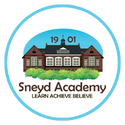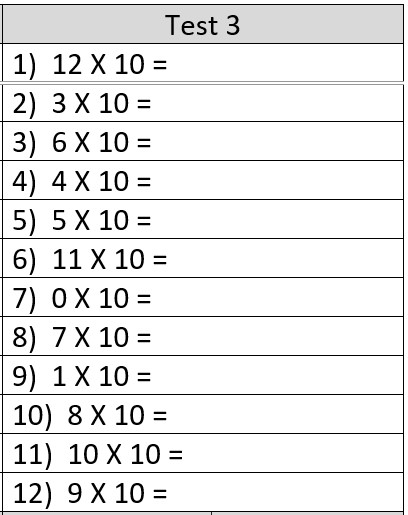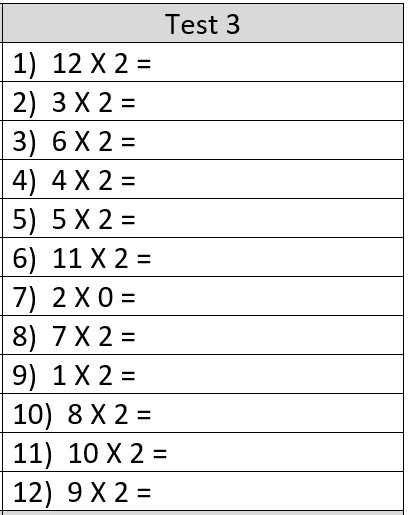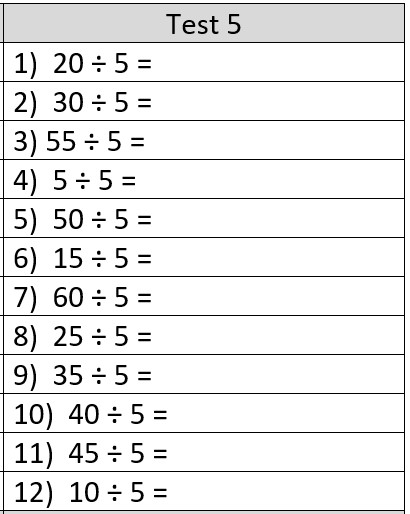Year 2 Mathematics
Curriculum Overview
The mathematics curriculum in Year 2 builds on from the number sense acquired in Year 1 and immerses children within the numbers to 100. Throughout their time in Year 2 children will become proficient in reading, writing, ordering and calculating using numbers to 100. When adding and subtracting, children use number lines to support their understanding of the number system and are taught to count on or back from the number with the greatest value. In Year 2 a significant amount of curriculum time is dedicated to ensuring children know number bonds to 100 and the 10, 2 and 5 times table by heart. All children should be fluent in this knowledge by the end of the year. Practical resources are still an important part of maths lessons in Year 2 and in particular children use ‘Base 10’ apparatus to conceptualise larger numbers. (See Resources Link)
Children in Year 2 take National Tests in mathematics to quality assure teacher assessments and help secure an accurate picture of children’s attainment level in this year group. The tests are made up of an arithmetic and a reasoning test which assess children’s abilities to think and work mathematically. We refer to these assessments in school with children as, ‘quizzes to help our teachers know what to teach next.’ We aim to make this assessment process as low key as possible so children are not put under pressure.
Below are the National Curriculum objectives which are covered in Year 2.
Year 2 Statutory Requirements
|
NUMBER – NUMBER & PLACE VALUE
- Count in steps of 2, 3, and 5 from 0, and in tens from any number, forward and backward
- Recognise the place value of each digit in a two-digit number (tens, ones)
- Identify, represent and estimate numbers using different representations, including the number line
- Compare and order numbers from 0 up to 100; use <, > and = signs
- Read and write numbers to at least 100 in numerals and in words
- Use place value and number facts to solve problems.
|
NUMBER – ADDITION & SUBTRACTION
- Solve problems with addition and subtraction:
- using concrete objects and pictorial representations, including those involving numbers, quantities and measures
- applying their increasing knowledge of mental and written methods
- Recall and use addition and subtraction facts to 20 fluently, and derive and use related facts up to 100
- Add and subtract numbers using concrete objects, pictorial representations, and mentally, including:
- a two-digit number and ones
- a two-digit number and tens
- two two-digit numbers
- adding three one-digit numbers
- Show that addition of two numbers can be done in any order (commutative) and subtraction of one number from another cannot
- Recognise and use the inverse relationship between addition and subtraction and use this to check calculations and solve missing number problems.
|
NUMBER – MULTIPLICATION & DIVISION
- Recall and use multiplication and division facts for the 2, 5 and 10 multiplication tables, including recognising odd and even numbers
- Calculate mathematical statements for multiplication and division within the multiplication tables and write them using the multiplication (×), division (÷) and equals (=) signs
- Show that multiplication of two numbers can be done in any order (commutative) and division of one number by another cannot
- Solve problems involving multiplication and division, using materials, arrays, repeated addition, mental methods, and multiplication and division facts, including problems in contexts.
|
NUMBER – FRACTIONS
- Recognise, find, name and write fractions 1/3, ¼, 2/4, ¾ of a length, shape, set of objects or quantity
- Write simple fractions for example, ½ of 6 = 3 and recognise the equivalence of 2/4 and ½
|
MEASUREMENT
- Choose and use appropriate standard units to estimate and measure length/height in any direction (m/cm); mass (kg/g); temperature (°C); capacity (litres/ml) to the nearest appropriate unit, using rulers, scales, thermometers and measuring vessels
- Compare and order lengths, mass, volume/capacity and record the results using >, < and =
- Recognise and use symbols for pounds (£) and pence (p); combine amounts to make a particular value
- Find different combinations of coins that equal the same amounts of money
- Solve simple problems in a practical context involving addition and subtraction of money of the same unit, including giving change
- Compare and sequence intervals of time
- Tell and write the time to five minutes, including quarter past/to the hour and draw the hands on a clock face to show these times
- Know the number of minutes in an hour and the number of hours in a day.
|
GEOMETRY – PROPERTIES OF SHAPES
- Identify and describe the properties of 2-D shapes, including the number of sides and line symmetry in a vertical line
- Identify and describe the properties of 3-D shapes, including the number of edges, vertices and faces
- Identify 2-D shapes on the surface of 3-D shapes, [for example, a circle on a cylinder and a triangle on a pyramid]
- Compare and sort common 2-D and 3-D shapes and everyday objects.
|
GEOMETRY – POSITION & DIRECTION
- Order and arrange combinations of mathematical objects in patterns and sequences
- Use mathematical vocabulary to describe position, direction and movement, including movement in a straight line and distinguishing between rotation as a turn and in terms of right angles for quarter, half and three-quarter turns (clockwise and anti-clockwise).
|
STATISTICS
- Interpret and construct simple pictograms, tally charts, block diagrams and simple tables
- Ask and answer simple questions by counting the number of objects in each category and sorting the categories by quantity
- Ask and answer questions about totalling and comparing categorical data.
|
White Rose
As an academy we structure the delivery of the national curriculum in the order set out by the White Rose and we use a great many of their resources such as the ‘small steps’ to support this delivery. The timetable shows the order in which units of work are taught. Please click here.
Marvellous Multiplications
The Marvellous Multiplication system is a structured system that we use at Sneyd Academy to support children in learning multiplication tables by heart. The system uses a variety of active teaching techniques alongside regular opportunities to rehearse multiplication tables so children become familiar with all multiplication and division facts for each multiplication table. By the end of Year 2 children are expected to know the multiplication and division facts for the 10, 5 and 2 times table by heart.
Marvellous Multiplications are tested each week within Big Maths sessions. Examples of tests are below. Children are given 2 minutes to complete each test.




